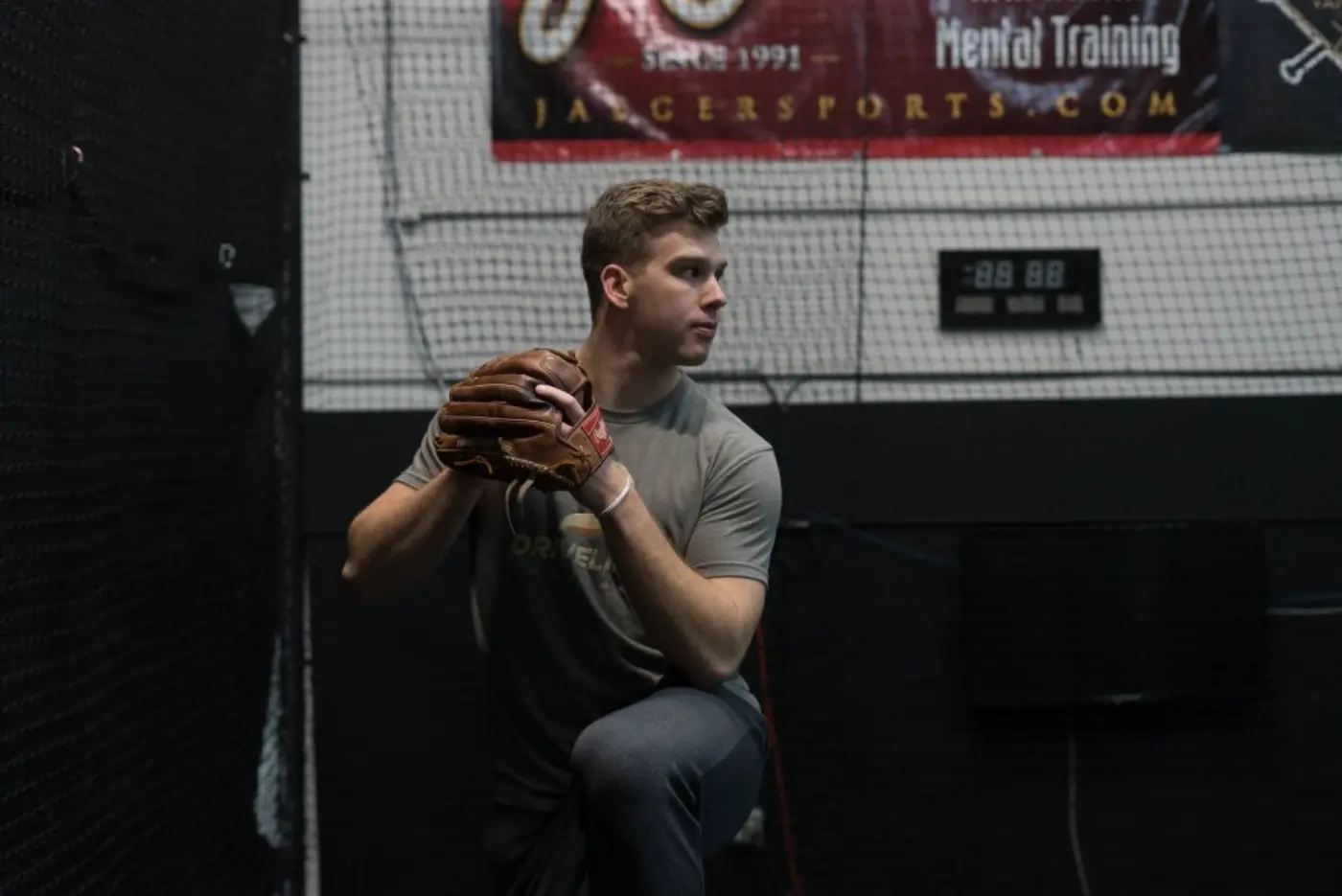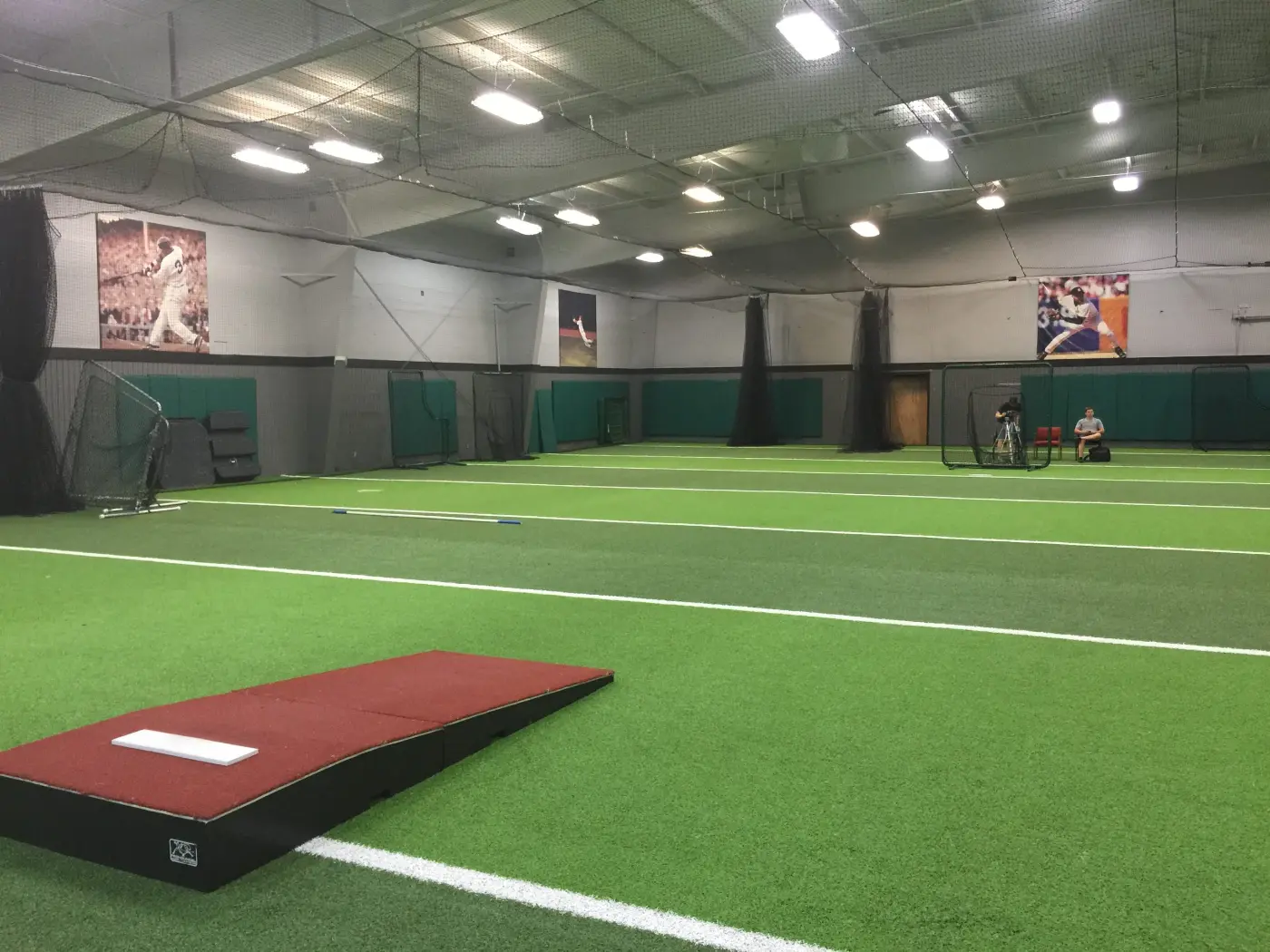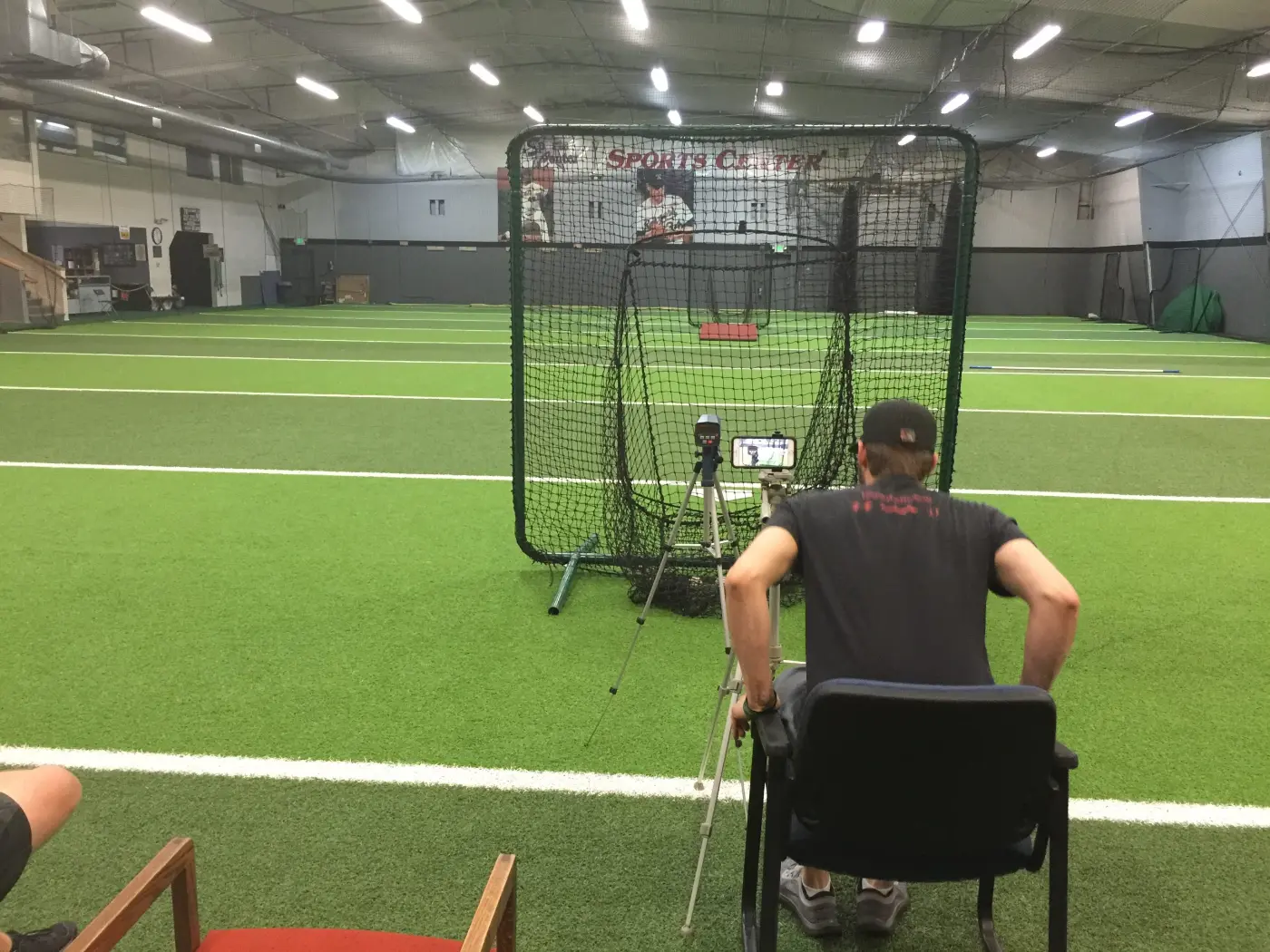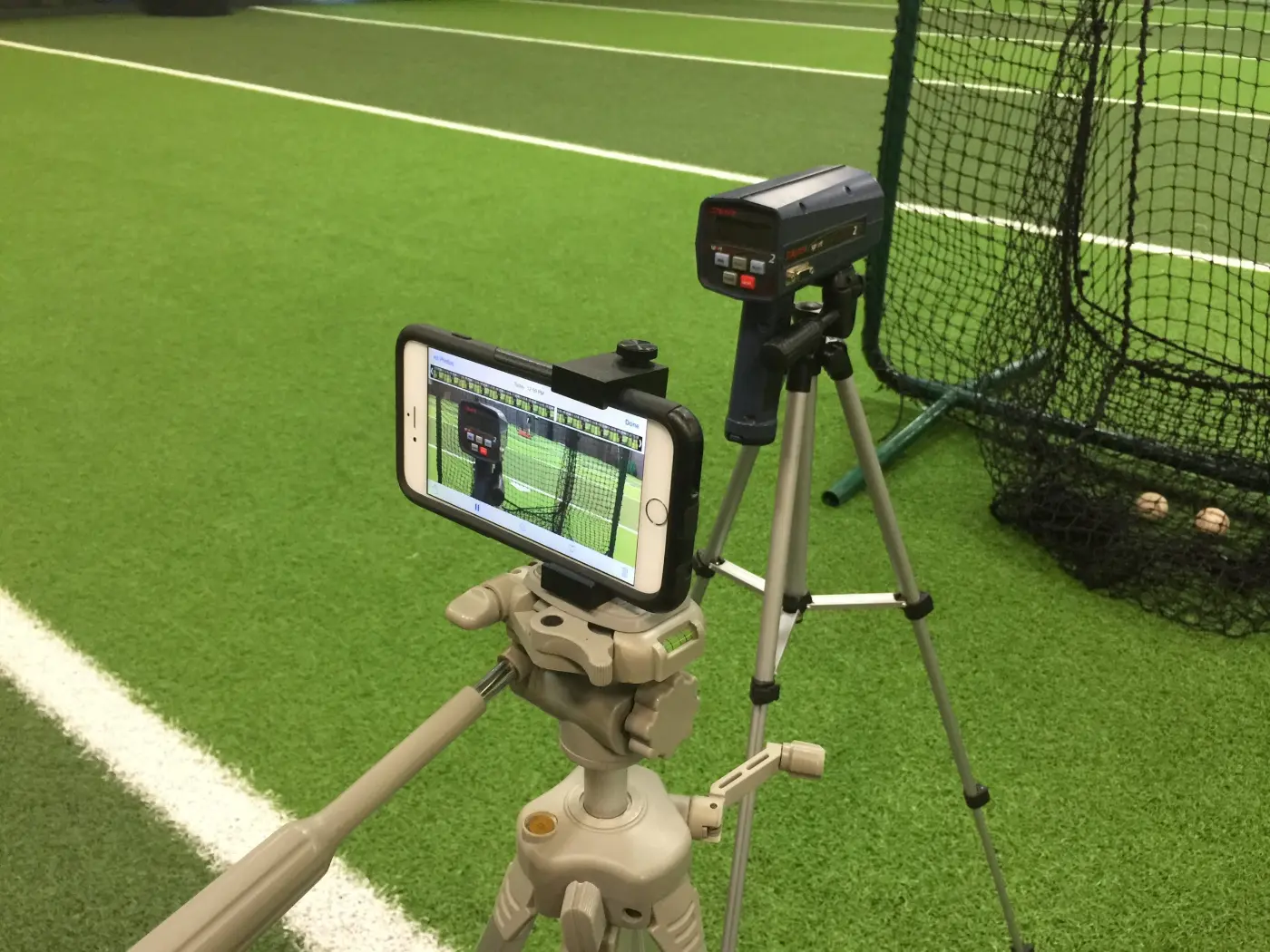How to Make Baseball Recruiting Videos Coaches Will Actually Watch

There is only one way to make baseball recruiting videos for pitchers: give recruiters and pitching coaches all the information they need to make a decision in that video.
Josh Fitch Recruiting Video
Don’t let someone charge you money to create something that can be done with a phone and 30 minutes with a video editor. Below we are going to walk you through step-by-step how to create a baseball recruiting video that recruiters will enjoy watching (if you’re good).
How do we know? We make them all the time for athletes in our Pitching and Hitting programs–and the feedback from coaches is overwhelmingly “Thank you for not wasting my time.”
We wrote up some more about understanding baseball recruiting and why it might be that you didn’t end up recruited or drafted, but what follows below is the guide.
What is the Goal of Baseball Recruiting Videos?
A video is an introduction, plain and simple. You don’t need to add a lot of extra information and showiness.
If you wanted to introduce yourself to someone you had a romantic interest in, you shouldn’t expect to succeed by walking up and saying,
“HiI’mJoshI’ma16yearoldPisceswholovestoplaybaseballanddanceandwatchfunnyvinevideoswouldyouliketowatch5minutesofmedancingrightnow(dances for 7 minutes)andIalsolovetowritebeautifullovesonnetsinbeautifulcalligraphy(writes poem for 20 minutes, hands poem to no one because they left 26 minutes ago).”
Introduce yourself as a player with a certain skillset and GPA/Test Score profile. Your goal is to secure a call or text and someone to come watch you play.
What information should you include? And what are the red flags?
Definitely include the following pieces of information at the end or, possibly, at the beginning:
- Age and Grad Year
- Academic Information (GPA/SAT/ACT only)
- Contact Information (Phone and Email only)
- Height and Weight (Not “Roster” Height and Weight)
- Extra (No more than 140 characters of “extra” info–i.e. two-way status, academic programs)
Here are a few major red flags:
- Excessively long videos
- These are just boring to watch. Most evaluators have made up their minds within 3-5 pitches if you are an athlete of interest. You are wasting their time.
- Showy cut graphics
- What is the value added to the coach here? The baseball team does not have the authority to hand out video editing scholarships.
- Hardcore Metal/Dub-step/Smashtronica Music
- Most coaches are 35+ years old. The Venn Diagram that is “35+-year-olds that listen to Avenged Sevenfold and Cattle Decapitation” and “Full-Time College Baseball Coach” has almost no overlap. Include music and you run the risk of someone turning off your tape or, worse, actively forming a bad opinion of you solely because of your taste in music.
- No verifiable data
- Recruiters have been burned by parents, kids and coaches who say “So-and-so throws 91 mph” only to show up with a radar gun and find out that So-and-so is 81-83, topping 85 mph. When you do this, you cannot rebuild the recruiter’s trust. This is the information age–your skillset will be found out. If you are throwing 95 mph, people will know. If you are throwing 75 mph, people will know that too. Put a radar gun in the shot! (If you don’t have one, Pocket Radars perform as well as Stalkers and are affordable.)
Where College Coaches and Recruiters are Coming From
Pitching coaches and recruiters have a limited amount of time to see athletes in their area.
Plus they have seen thousands of hours of tape already. Skills-wise, you cannot surprise them.
You can surprise them by respecting their time. Their world is awash in unedited recruiting tapes. Each coach has a story of a frustrating 10-hour drive to see a showcase where not one kid has the tools to succeed in college. Generally speaking, college baseball coaching involves a lot of thankless work that sucks up recruiters time to try and put a good group of 25 on the field.
Recruiters have a very clear idea of what it takes ability-wise to be successful in their league, and they are looking for a certain tool profile.
This doesn’t mean that each coach looks for the same profile or weights each component of the pitcher the same. They simply have a clear idea in their head of who is going to be able to compete and succeed at their level (right or wrong) in their program (right or wrong). And it’s been reinforced by spending tens of thousands of hours on baseball fields, watching baseball recruiting videos, and talking to baseball coaches.
In varying orders of importance and weighted values, recruiters are looking for:
- Ability: raw toolset or athleticism
- Skill: how well you can apply your ability to game situations
- Academic Talent: can I get you into school without impacting my 11.7? will you be ineligible?
- Character: how do you handle adversity, challenges? Are you a good person, team player?
How limited bandwidth impacts an athlete who wants to be recruited
You might be a low-velocity RHP with nasty movement and ability to locate multiple pitches who could dominate the D1, but you will have a very steep upward climb to convince coaches that you can because few have done that.
That doesn’t mean you can’t go to a smaller school and be an ace.
The secret to getting a scholarship is not a secret:
- Develop Ability Coaches Want
- Mind Your Schoolwork
- Contact Schools Where Your Talent Would Play
Develop your pitching ability and skill, train with us or use the training templates in Hacking the Kinetic Chain.
How To Make Good Pitching Recruiting Videos?
Here’s a quick template that we’ve used to build the baseball recruiting videos that have landed our athletes D1 scholarships and pro contracts. Take a look at it in action. It works.
Christian Meister Recruiting Video
Here’s the catch–you have to have the toolset to get the looks. Christian was 92-93 off an indoor mound with good command. He had plenty of D1 interest and eventually was drafted and signed.
If he was 82-83, he wouldn’t have been drafted, but he definitely could have continued playing–there are plenty of local D2/D3/NAIA schools who would have been interested.
The Step-by-Step for good Baseball Recruiting Videos
To do this right, you need a radar gun, a camera/cameraphone, a video editor, a catcher, and an uninterrupted place to throw.
Here’s the simple set-up.

Step 1
Find a bullpen area to throw. You want unimpeded side and behind-the-catcher views.
Step 2
Set up a catch net behind your catcher. This is where your radar gun and camera are going to go.

Step 3
Set up your video and radar equipment on tripods. Make sure that both are turned on.

Step 4
Test your radar gun/video setup. You want to be able to see the radar gun numbers displayed in the video, the pitcher throwing the ball and the outcome of throw of the pitcher (ball or strike).
Videos that don’t create the desired effect for recruiters:
- A pitcher throwing with an illegible radar gun obscuring half the shot.
- A clearly legible radar gun without the pitcher in frame so it looks to be randomly spitting out numbers.
Step 5
Turn on the gun, video and let the noise rain down. 15 to 20 pitches should be sufficient. Try to make them your best 15-20. Showcase all of your pitches and try to absolutely air it out.
Peter Bayer Recruiting Video
Post-Production: How to Edit the Video
It’s outside the scope of this post to talk about how to edit these videos beyond basic stylistic guidelines. Someone at your high school can probably do this in 15 minutes if you can’t.
Here’s the rough breakdown of how your video should look:
- 15-20 seconds of fastballs
- 15-20 seconds of breaking balls
- 5-10 seconds of side view mechanics (slow-motion is a bonus)
- 10 second hold of your contact information, educational information and a quick summary of who you are (see above).
Under no circumstances should it be longer than 60 seconds. Upload this video listed or unlisted (not private) to Youtube.
How to use baseball recruiting videos to find a school that’s right for you
Now that you have baseball recruiting videos that will impress coaches by its focus on their needs, how do you “get recruited”?
Our best advice to high school athletes is always: “Find a place that will let you play and develop for 4 years.”
Why play and develop? The odds are stacked against you be drafted out of college–you will want to have the memories of playing baseball games, being on the field and developing, not of being jerked around, transferring multiple times and generally having a miserable time.
If you do want to be drafted out of college, you want to find a place that supports your development. We have heard the horror stories of guys doing Plyo Ball ® drills in their dorm rooms to prevent their coaches finding out.
The weight of that environment will grind you down.
Training to improve is hard enough. You don’t get points for degree of difficulty.
Contact schools that you’re interested in proactively.
You don’t need to “showcase” to generate interest. If you have the ability, you can generate good interest with a simple 3-step procedure.
You need to write the emails. If you want to show schools that you are an adult mature enough to handle the transition from high school baseball to college baseball, do not have your parents write the email.
Step 1: How to Find Baseball Schools that Match Your Talent
Make a list of universities that you’d like to attend and where you meet two criteria:
- Minimum GPA requirements for admission
- You have a similar skills profile to their midweek starters and second/third options out of the pen.
For each of these schools, fill out their athlete questionnaire. This is on most websites as “Get Recruited”. This list is monitored to different degrees at different schools.
Your work is not done. If you fill one of these out and think, “Filled out the athlete questionnaire showing that I had a 0.79 ERA my senior year (better than Kimbrel’s) so now I will sit back and wait to cash that scholarship check!!”, you will still be sitting back with no check next spring.
Step 2: How to Email College Coaches About Recruiting
Send a short follow-up email that day. Find the email of the head coach, his recruiting coorindator (if listed), and pitching coach. Address the email to the head coach with the other two cc’d.
Use this template to keep it focused on what the coach wants.
“Hi Coach [Name],
I just filled out your online recruiting questionnaire. I know your time is valuable so if you want to look at a short skills video I made it is here: [link].
I’m excited to possibly attend [school] because [#1 reason you want to attend, less than 1 sentence long].
It’s easiest to contact me via [text/email/phone] at [contact info].
Thanks,
[Your Name]”
Step 3: How to Move On
If you aren’t contacted back, do not send further “Hey!! Did you get my email?” follow-ups.
Sometimes you won’t fit the profile of what teams are looking for. Or you do, but they don’t have the money. Or maybe they have the money but after the draft.
Just continue to narrow and refine your search. If you find a place you can develop, you might be able to transfer later to schools higher on your list.
If you don’t get into the school of your dreams, resolve yourself to play against them and shove.
How to Be Recruited for College Baseball
The recruiting game boils down to one thing: ability. If coaches perceive that you have the talent to thrive at their level, they will go to bat to get you in the program–talking to the admissions department, convincing other coaches that you are more worthy of a scholarship then their guy.
If you don’t have that ability, you might be left wondering, “I need more exposure. What is the one trick I need to do to get in at a D1 program?”
Sit 91mph. There aren’t any tricks.
If you’re late in the recruiting game, want to go D1, but don’t have D1 tools–you might be fighting a battle you can’t win. But that doesn’t mean you aren’t a D1 athlete. You just aren’t one yet.
Training is the key to success. Get consistently better each year.
Go somewhere that will let you develop, work your butt off, develop your skills and enjoy the ride.
Get Started Training the Right Way.
Call or email us. Our staff is 100% committed to having an honest conversation about what will help you get to the next level of your baseball career.
Comment section
Add a Comment
You must be logged in to post a comment.
Learning to Train With Intent: How Peter Bayer Got Drafted - Driveline Baseball -
[…] the recruiting video above, Peter left and showcased a fastball at 89-92 MPH the California Collegiate League, with […]